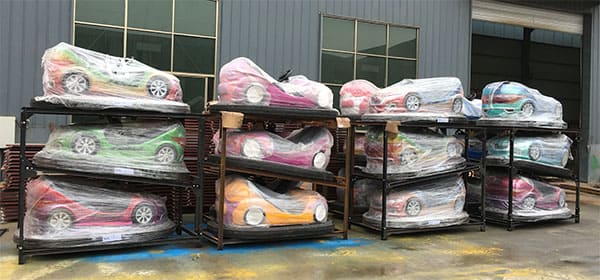Choosing between a battery-powered trackless train and a diesel train largely depends on your specific needs, environmental considerations, and operational preferences. Here’s a breakdown of the advantages of each to help you decide which might be better for your situation:
Battery-Powered Trackless Trains Advantages
- Eco-Friendly
Battery trains emit no pollutants, making them a greener choice that’s better for the environment and suitable for indoor and outdoor use.
- Quiet Operation
They operate quietly, enhancing the visitor experience in noise-sensitive areas like zoos, parks, and residential areas.
- Lower Operating Costs
Electric trains typically have lower running costs as they do not require diesel fuel; their maintenance is often simpler compared to diesel engines.
- Flexibility
Since they are not reliant on fuel, battery-powered trains can often be used in locations where fuel management is challenging.


Diesel Trackless Trains Advantages
- Power and Range
Diesel trains are generally more powerful and can handle longer distances and tougher terrains without needing frequent refueling.
- Durability
Diesel engines are robust and suitable for heavy-duty use, often exhibiting longer lifespans under strenuous conditions.
- Cost-Effectiveness
Upfront costs for diesel trains can be lower, and they may be more accessible in regions where advanced battery technology is expensive or hard to come by.

Conclusion
For operations prioritizing environmental sustainability and indoor use, a battery-powered trackless train is likely the better choice. However, if your operation involves longer distances, more demanding terrain, or budget constraints with higher initial tech investments, a diesel train might be more suitable.
It’s important to assess the specific needs of your venue, including the typical routes the train will travel, the availability of charging or refueling infrastructure, initial investment costs, and ongoing operational expenses.







